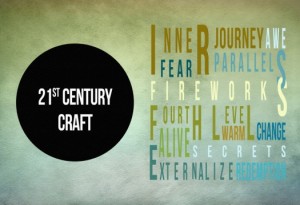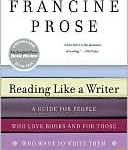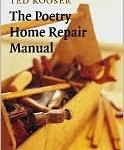Last week, I went to Hood River, Oregon, about 60 miles east of Portland where the Hood meets the Columbia, for the BreakOut Novel Intensive workshop.
“Intensive” is the operative word.
For a full week, I lived and breathed fiction writing. Thirty-two students from across the US and Canada met Monday evening, eager and a little nervous. We parted the next Sunday afternoon, tired, happy, and much, much more aware of what make stories succeed. Along with the dirty clothes in our bags, we took home tools and determination.
Did I mention it was intense?
BONI is sponsored by Free Expressions, a seminar and editing firm run by Lorin Oberweger. But the firepower comes from Don Maass, literary agent, writer, and teacher. Don teaches a three-hour class every morning and a couple of evenings. Lorin and Jason Sitzes teach an evening scene class. Every afternoon, we wrote, using exercises Don gave us in class. Each student has individual sessions with Don, Lorin, and three other instructors–and each offers something different. Jason, for example, who also runs the Writers Retreat Workshop, spent half an hour brainstorming with me on how to redirect a couple of plot threads gone wrong.
The hotel–the very comfortable Hood River Inn–sits above the river, and a walking path leads to a nearby park and marina. It also leads into the village of Hood River, a delightful historic town revitalized in recent years by recreation–sailing, wind surfing, winery-hopping. The village has several fun wine bars, cute galleries, and boutiques. And tons of coffee shops and three bookstores. It is the northwest, after all.
So, what did we learn? Don’s books, The Breakout Novel and The Fire in Fiction, are crammed with great analysis, exercises, and examples. But the class brings them to life.
One assignment was to bring a flat scene to life using the techniques we’d learned that morning: focusing on the protagonist’s goals and what frustrates them by identifying and showing internal and external turning points, using externalization to show the protag’s emotions and stir things up, identifying the mood of the scene and shifting it, then showing the effect on her, and rewriting dialogue
It took me most of the afternoon to rewrite a 2-1/2 page scene into 2 pages, by adding about twelve lines.
Ok, math isn’t my strong suit.
But that was Friday, and I was also using techniques we’d studied earlier in the week in pursuit of my overarching goal of redefining Erin, my protagonist: rethinking every line, thought and image, asking “does that convey what I want?,” “is that still part of the story,” and “is it still true?”
Intense. And worth every minute. If you get the chance to go–no: make the chance. BONI is offered twice a year, in Hood River and Orlando. Lorin and her excellent crew also offer other workshops, with the amazing Mr. Maass and other instructors.
Go. Your stories will never be the same again.
 I’m reflecting this month on the role of emotion in art, primarily on the page. Not portraying characters in the midst of an emotional experience, or not just that, but creating an emotional experience for the reader.
I’m reflecting this month on the role of emotion in art, primarily on the page. Not portraying characters in the midst of an emotional experience, or not just that, but creating an emotional experience for the reader.
 talks a lot about emotion on the page, but more significantly, about evoking emotion in the reader. His 2016 book, The Emotional Craft of Fiction: How to Write the Story Beneath the Surface, gives writers practical insights and exercises for giving readers an emotional experience. So that’s my theme for May.
talks a lot about emotion on the page, but more significantly, about evoking emotion in the reader. His 2016 book, The Emotional Craft of Fiction: How to Write the Story Beneath the Surface, gives writers practical insights and exercises for giving readers an emotional experience. So that’s my theme for May.




